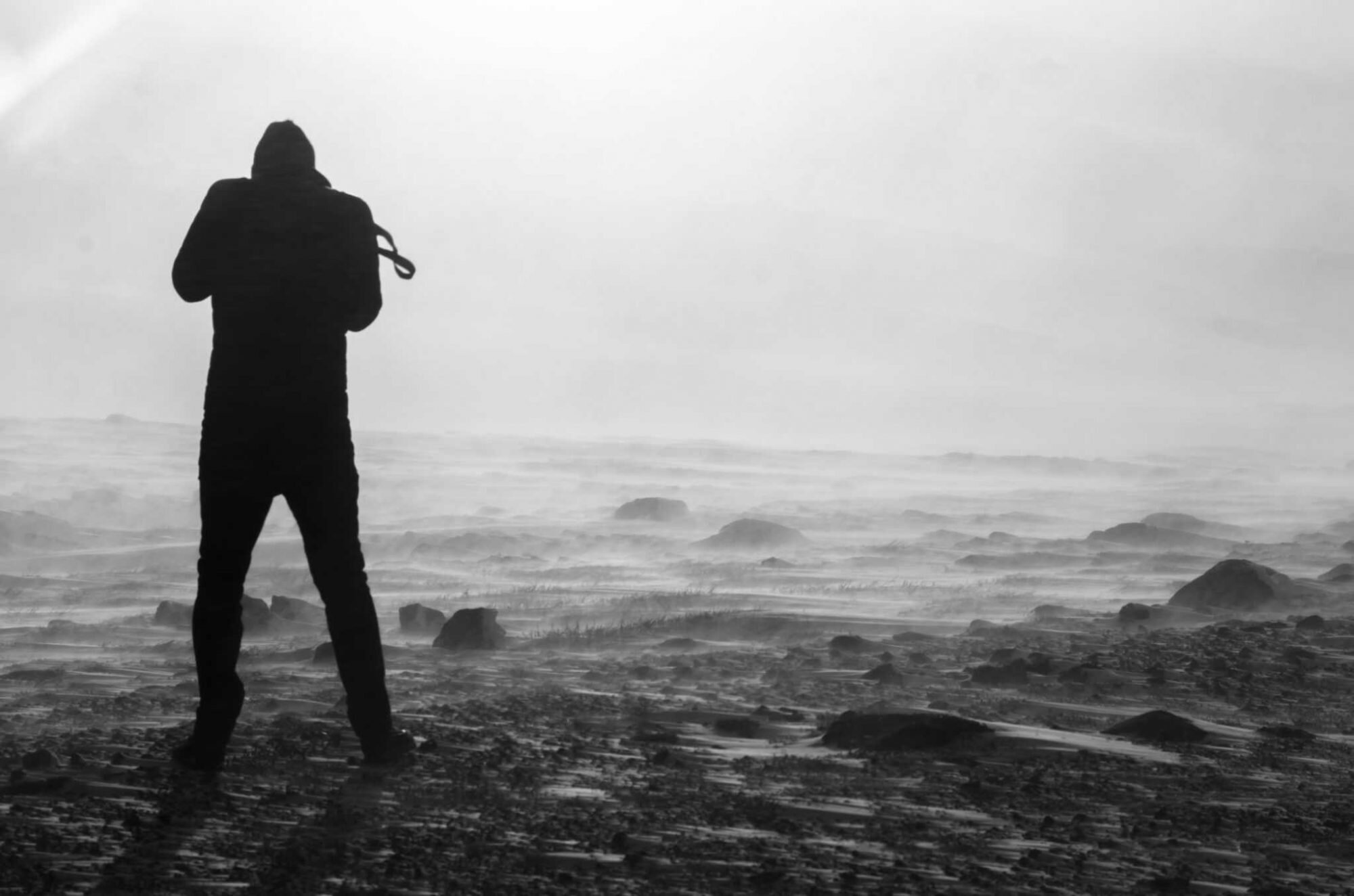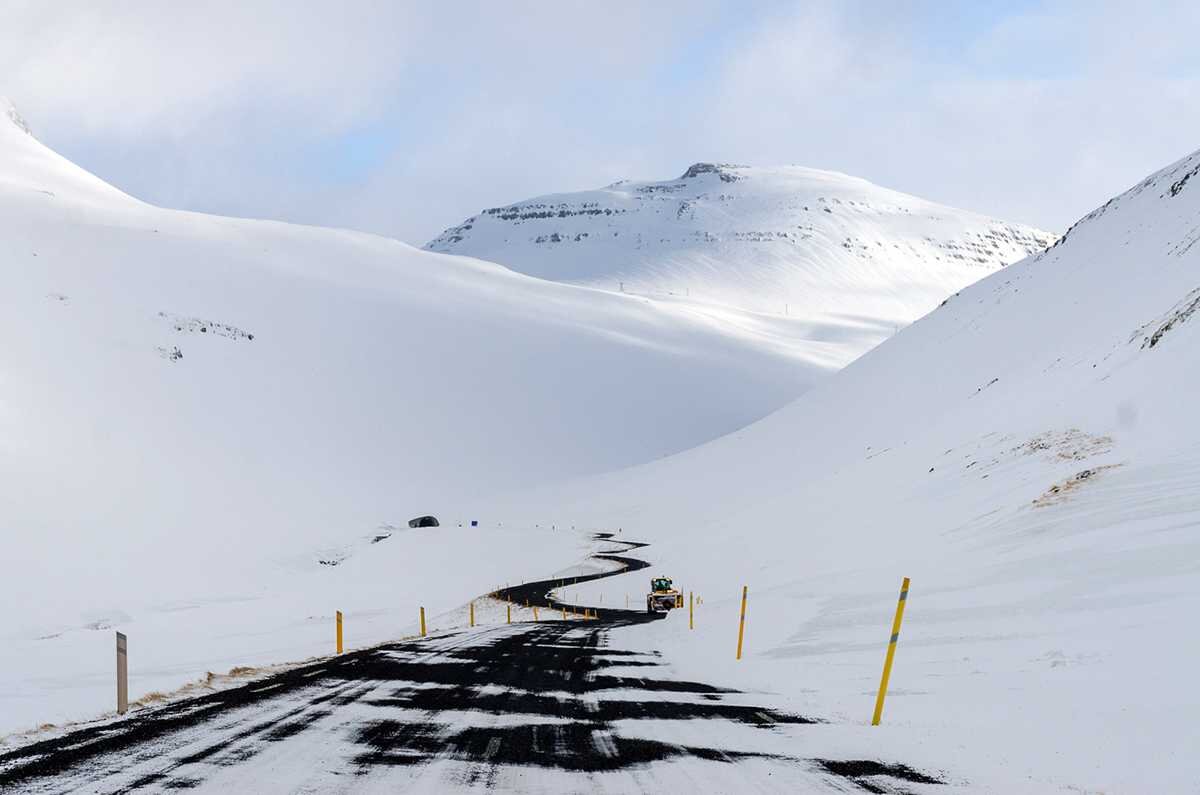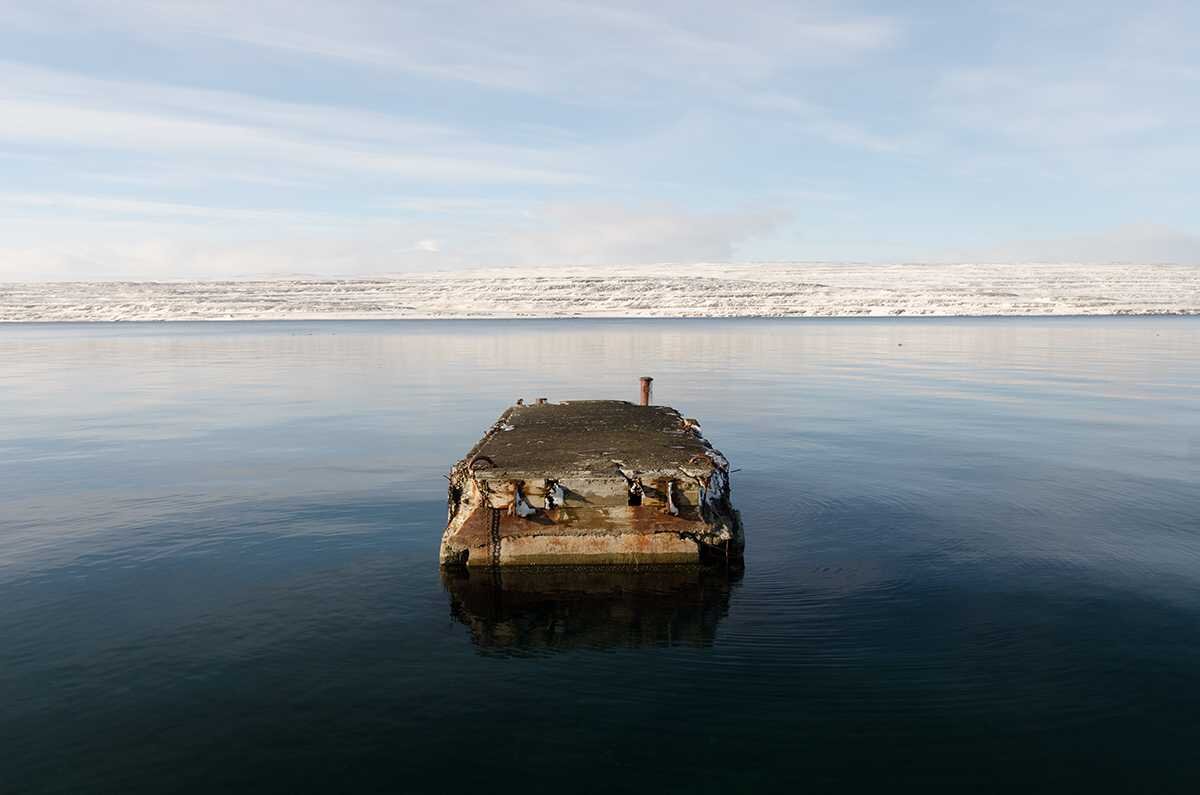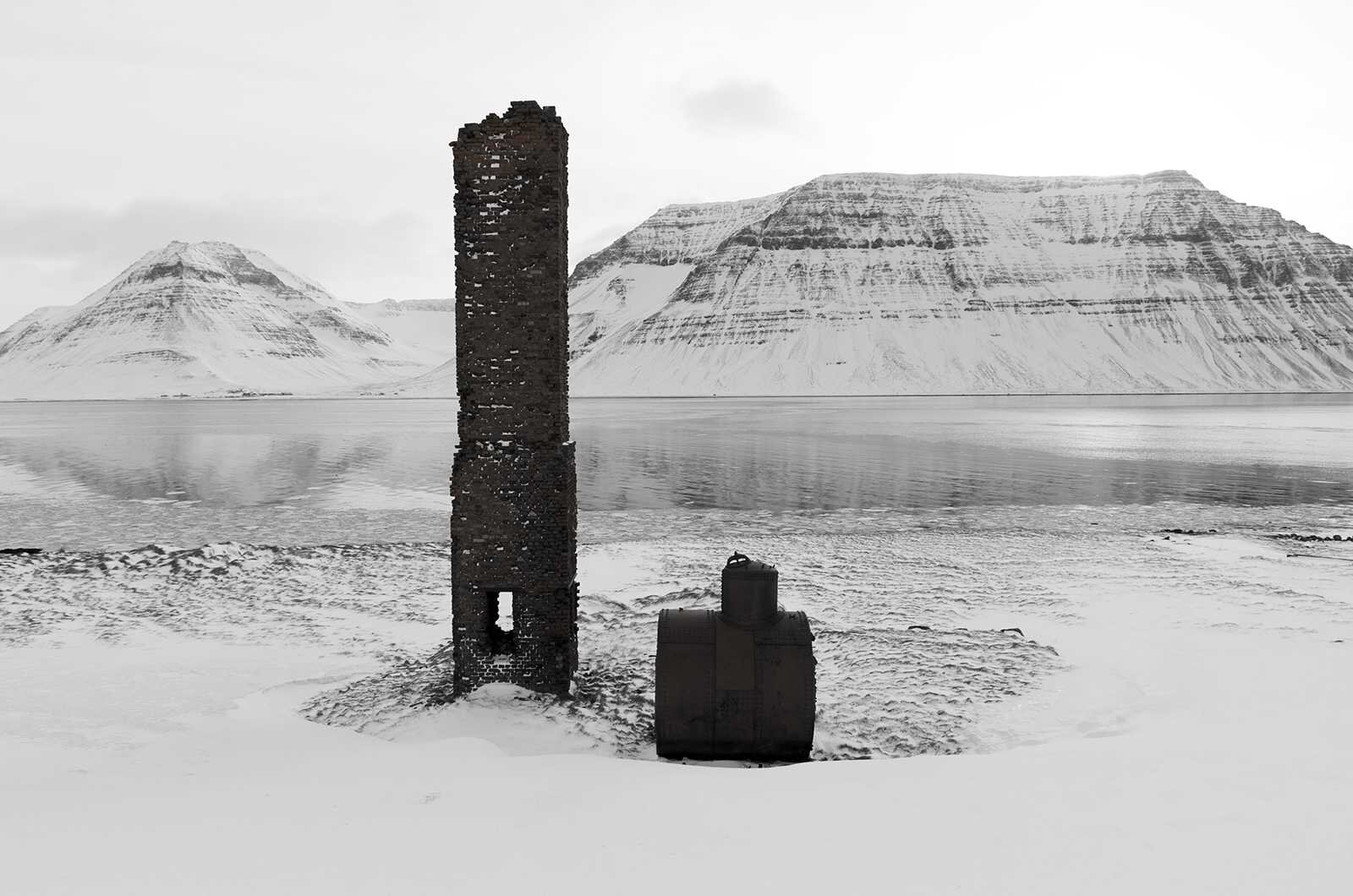It's All About the Light - An Icelandic Road Trip
The endless dusk in Iceland makes for an amazing photographic journey.
It strikes you the moment you step off the plane at Keflavik Airport. The remarkable quality of Iceland's light. Even down south near Reykjavik, there is a milky-soft ambiance in the shadows that make it a favorite for cinematographers and landscape photographers alike. In this photographic tour of Iceland, I quickly realized it was all about the light.
Note: This article contains sponsored links. I only endorse products that I use personally.
I arrived in Reykjavik on a chilly March afternoon to meet with an old friend and fellow photographer Ross Buswell. Over the course of next 10 days, we’d be driving a 4x4 around the perimeter of the frosty and remote island, from its majestic Westfjords through to its eerie eastern shorelines. We would be spending hours braced against the bitterly cold winds and intermittent swells of frozen rain while photographing the region’s varied and often untouched landscapes. We’d clamber along the edges of giant volcanic craters and watch ice flows drift and luminesce under a laconic sun that never strayed far from the comfort of the horizon. All the while the delicate soft light would repeatedly take my breath away.

The drive to Hólmavík

While there is plenty to see around Reykjavik and the south, our journey began by heading up to one of the country’s remoter regions. After arranging our car (it’s recommended to book in advance for the best deals) we hit the road for the first leg of our trip, a long drive up to the small town of Hólmavík, in the west. It sits at the base of the Westfjords, at the edge of the arctic circle. Along the way, we hit some of the more challenging driving and shooting conditions we encountered on the tour.
At that time of year, it is not a drive to be taken lightly. The road conditions are extremely variable, and whiteout conditions can rise up within minutes. Its advisable to check the road reports frequently and assume things can quickly change.
The temperature also varied wildly, and I often found myself putting on and then stripping off jumpers within a few minutes. It wasn’t uncommon to set up a shot by the side of the road in the relative warmth of the clear sky, only for swells of snow and ice to blow in, swirling around us to the point it was difficult to see a few feet ahead.

March in Iceland is still inside winter, but late enough in the season for us to able to access some more remote stretches of North-Western roads that would otherwise be locked in by snow drifts - despite the ongoing efforts of ubiquitous snowplows forever scraping away sheaths of ice from the roads connecting its western and northern towns.
Tip: An all-wheel-drive vehicle is essential for traveling on the northern roads. The weather in Iceland is notoriously changeable and it’s not uncommon for people to become stranded in their vehicles, even in the south, from being caught off-guard on back roads. Our vehicle thankfully had studded snow tires and chains at the ready.
As challenging as the conditions were to shoot in, the snow drifts created some dramatic and foreboding scenes, particularly when caught in the sunlight.

There was little evidence of habitation once we started heading north. We were soon surrounded by wide-open landscapes populated by nothing but the occasional radio tower or Icelandic horse - a famously hearty animal that seemed completely untroubled by the frigid conditions.

The trickiest part of the drive was route 61, a small strip which cuts across the base of the Westfjords. We gained altitude quickly and found ourselves in high terrain and terrible visibility. Ross’s driving skills were put to the test a few times, as drivers, apparently either more familiar with the roads or with the ability to see through snow tend to drive fast.
Near miss on road in Iceland
The drive was worth it, however, as soon we found ourselves approaching the base of the fjords, taking in some truly stunning coastal landscape.
Shooting in the snow

Shooting snowy vistas can present a few technical issues. Firstly it is not uncommon for cameras to underexpose scenes with a lot of snow or ice, particularly when shooting into the sun (which I love doing). Camera light meters are calibrated to what is known as ‘18% grey’ - a kind of average luminance that accounts for most scenes. While most modern cameras are programmed to recognize and compensate for snowy scenes, it’s still a good idea to overexpose anywhere from 1/3 to a full stop depending on how bright/white you want the snow to appear.
That said, there is an aesthetic choice to be made in terms of how much white to leave in the snow. Sometimes exposing it too bright would completely blow out all the subtle tones and shades that might be helping tell the visual story.

When shooting in Iceland, it’s all about the light. It’s northern latitude and climate make for lighting which most studio photographers work hard to create - a mixture of both highly directional sunlight that provides good definition, and lovely soft shadows filled with natural blue and magenta tones.

Another common issue with shooting snowy scenes is white balance. This has to do with what the camera is going to decide represents white in your scene (our perception of the color white is more subjective and relative than you may realise). Cameras almost always have a particular bias, even when shooting with auto white balance turned on. My camera, for example, tends to lean towards a slightly yellow cast, which can be fine in the relatively greyer light of London, but something I wound up having to adjust for in Lightroom in a number of my Iceland shots.
Tip: You get a lot more control over your final images by shooting in RAW format, and then using a program like Adobe Lightroom Classic to adjust the white balance, exposure, and other settings.
Again, there is a degree of subjectivity with white balance. In my case, I wanted to go for fairly neutral white tones and preserve the blues and magentas in the ambient shadows. I could, however, have chosen to try to make the shadows neutral and have a blue cast in the clouds. It’s really what feels natural and what you are trying to say.
Tip: There is a good article over here on the B&H website with a few more tips for shooting snow: 7 Tips for Taking Photographs in the Snow
Another ‘gotcha’ for shooting snowy landscapes: Make sure your camera sensors are clean! (I have to confess I was guilty of this one myself on this trip).
If you shoot with a DSLR, over time the sensor plate inside your camera can get a bit grubby with small flecks of dust. In normal shooting situations these are often scarcely noticeable, but when shooting large swathes of white, such as snowy landscapes, they can show up in your picture as small grey blobs. To avoid this ensure you occasionally have your camera cleaned.
Pro-tip: To see if your camera needs cleaning shoot a picture of a large white sheet of paper in the bright sunlight, so the white fills the frame completely. When you open up the image if you see any small grey dots you may want to think about having your camera cleaned.
Important Note: Never attempt to clean your camera’s sensor yourself, it is extremely delicate and you will likely damage it. Take it to a professional to do it properly.
Hólmavík
After several hours of amazing and occasionally hair-raising driving we made it up to the small town of Hólmavík in the early evening, with just enough time for a surprisingly good bowl of clam chowder at the only open restaurant - which also apparently houses the (regrettably not open) Museum of Icelandic Sorcery & Witchcraft. Oh well, something for next time! We had a bit of a wander around town, and then it was an early night to set off for the next leg of our trip exploring the beautiful Westfjords.


The next stage of our journey through the country of endless dusk takes us to the majestic Westfjords and Ísafjörður
Previous instalment: An Icelandic Road Trip - Part 1Full disclosure is probably due. I wouldn't actually consider myself a landscape photographer, per se. Unlike my traveling companion, Ross Buswell who, when shooting, is at great pains to be where other humans are not. I, on the other hand, usually have my camera pointed the general direction of people or at least things made by people - neither of which were in great abundance by the time we arrived in the Westfjords.
Still, while it might have been a little outside my normal style of photography, the Westfjords certainly presented little hardship as a photographic subject. The natural environment of Iceland’s most Northern region, especially when still dusted over with snow and ice, provide a jaw-dropping picture postcard opportunity at every bend in the road. The drive up to Ísafjörður theoretically only takes 3 hours or so, but much longer when it is frequently punctuated by Ross suddenly veering the car off to the side of the road because we have been smacked in the face with another irresistible piece of scenery that could not go uncaptured.

Even when driving down the road there was plenty of great material. Ross had mounted a Blackmagic video camera on the windscreen to capture video footage through the windshield and has since been putting together what I expect will be some lovely time-lapse sequences of the trip. It was my job to occasionally rack the exposure to compensate for changes in lighting, which I dutifully ignored, being too consumed by gawking at each new breathtaking scene unfurling around the next bend and trying to fire off shots myself through the increasingly grubby windscreen.
Photo Tip: Shooting through a car window is not ideal. Because of the speed of the car, objects - particularly close up - can easily blur out and you have a good chance of picking up reflections and dirt from the windscreen.
There are however a few things you can do to improve your chances of getting a usable shot. Firstly, crank up your ISO sensitivity quite high: 1600 to 3200 range (or even higher at dusk). This will allow you to use a higher shutter speed; at least 1000th of a second to compensate for the car movement. Also, don’t put the f-stop too high. Something like f 4-5.6 is fine, as you want a slightly shallower depth-of-field to avoid focussing on windscreen gack and reflections.
Finally, try to shoot forwards, rather than through the side window. Keep the camera lens as close as you can to the window glass (without bumping it) and focus on the horizon or objects in the distance.
As we got closer towards the town of Ísafjörður, the scenery started to get pretty mind-blowing. Take this little stop off spot for example. I’ve not included the picnic tables nearby, which I presume are a lot more inviting in the relative warmth of summer than under contstant waves of eyeball freezing gusts of wind in March.


It’s worth mentioning that trapesing around on snowy northern riverbanks can be extremely dangerous if you are not cautious. It’s very easy to hit a sink-hole that looks like its covered with snow, but in fact, has flowing water or gaps below. It would definitely not be pleasant dropping into the sub-artic drink, so it’s good to be mindful before heading off the side of the road. Never venture onto permafrost or a glacier without a trained guide.
I’m not sure what that then says about this cabin precariously perched above a huge snowy cliff…

Ok, of course, that’s a little bit of forced perspective at play. It is, in fact, a small ditch in front of me and the cabin is far in the distance. It’s a cool thing to work with when shooting these snow-covered landscapes though, as there is often no clear frame of reference for distance, so you can have some fun playing with compressing depth perception.

Along the way, we also found lots of opportunities to explore interesting little off-roads. Often they would lead up to an old church like the one above. It always amazes me how one can find themselves in these seemingly utterly remote locations, with no one around for miles, and there will be this little chapel or stone church. Like who was it that decided: ‘yep, here is the spot, absolutely nothing here for as far as the eye can see. Really nice and remote and also quite inaccessible. I know, let’s stick our church here.’ Well anyway, they do make for a good photo opportunity.
You can see Ross had a visitor come along when shooting the church. There were a couple of super friendly dogs that were extremely happy to see us. So much so that they kept diving frantically under the car tires as we drove out. I had to jump out of the car and try to lure them away while Ross made a run for it so we would not risk running over someone’s best friend in the middle of nowhere.

Around Ísafjörður
We arrived in Ísafjörður late in the afternoon, in time to grab dinner and head out and climb a hill above the town for a spot of northern lights hunting. Unfortunately, there wasn’t much to be seen and we were soon getting pelted with sheets of icy rain. Landscape photographers live for this stuff I think. We decided to pack it in for the night.

We spent the next day exploring around the Westfjords, and taking many, many pictures - too many to talk about here. It was a case of drive around, see incredible, breathtaking scenery, shoot loads of pictures. Get cold. Rinse and repeat…! These are few of the shots I’ve processed so far. I will likely update this gallery with some more as I go along.




It was then back to Ísafjörður for the evening, to recharge personal and camera batteries, and prepare for the long drive down back through Westfjords and into the next leg of our journey across the north-west of Iceland.

I hope you enjoyed the latest installment. I’d love to hear your comments or your own experiences traveling and photographing up north.

